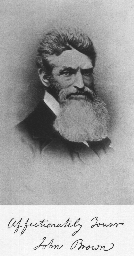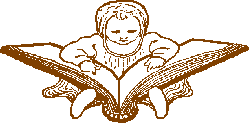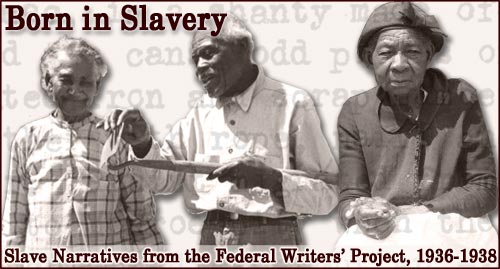


History 203 Dimensions of History Roger Williams University Fall, Semester, 2001 |
Michael R. H. Swanson, Ph. D. Office: Feinstein 111 Hours: M, T, Th, F 9:00-10:00 Phone 401 254 3230 |


After the Fact: The Art of Historical Detection James Davidson and Mark Lytle New York: McGraw-Hill, 2000 |

Week of October 16 - 18, 2001 |
For Tuesday, October 16 Quiz 2 on Rutherfurd's London, Chapters 6 - 11 |
Read, in Davidson: Chapter 6, "The Madness of John Brown" pp. 122-146 |
Grand theories such as Frederick Jackson Turner's Frontier theory try to explain historical events by relating them to larger cultural factors. Psychohistory, on the other hand, looks inward to uncover explanations for human behavior. The organization of this chapter varies a bit from some of those we've investigated to date. We begin with a bare-bones outline of the event itself: the raid on Harper's Ferry. Then we proceed to look at contemporary explanations of Brown's behavior, including those which diagnosed him as "mad". Finally, we look at more general psychological theories to uncover clues to Brown's behavior. You'll note that most psychohistorians take the theories of Sigmund Freud for their jumping off place. Consequently, they look to Brown's own family history for clues to his behavior in the public arena. How convincing do you find the story they weave? |
For Thursday, October 18 Read, in Davidson Chapter 7. "The View from the Bottom Rail" pp. 147 - 175 |
Most history reconstructs the past from literary sources: documents of one sort or another, both private and public. Significant parts of the population leave scant literary records, and what we know of them is gleaned from the perceptions and records of others. Oral history provides a way of capturing the perspective of non- literate people. This chapter suggests both the advantages of oral history and some cautionary warnings associated with it, using the tale of the Freedmen's Bureau to provide examples. You will want to identify several different pitfalls associated with oral history, and think of ways to overcome them. Many of the slave narratives are now available on line from a number of different sources. The Library of Congress American Memory Collection is perhasp the most accessible. Click on its logo, below, to visit the site. |
Madman or not, Brown achieved celebrity status to the point where photographic mementos were in high demand. This one is signed, "Affectionately Yours, John Brown |
As one might imagine, controversy around the legitimacy of applying psychoanalytic theory to history is fierce and ongoing. Few persons are trained in both disciplines, leading to charges of "amateurism" being levelled at researchers using psychohistory as a framework for historical reconstruction. Samples of psychohistorical writing can be found by following the link in the illlustration at the left, above. A critic of the field can be found by following the link in the illustration at the right. |
Unlike psychohistory, which is under a bit of a cloud these days, the interest in oral history is growing stronger, if anything. Oral history projects can be appropriate for any age group, and frequently make very effective introductions to studying history of all kinds. Everyone has a history, and many people enjoy talking about their life experiences, especially to young persons. Click on the logal of the American Memory Fellows Program below, for a sample lesson plan using Oral History in the middle schools. |




